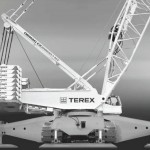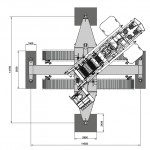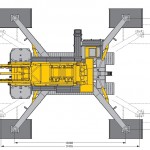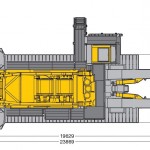In wind farms construction usually at least 2 cranes are needed: a main crane to lift component such as tower segments, blades and rotor and a smaller crane called “auxiliary” that help the main crane during the lift operations to manipulate the wind turbine component.
The auxiliary crane can also be used to move steel rebars, embedded rings or anchor cages and so on.
If the main crane is on crawlers it can be found in two types – “standard track” and “narrow track” cranes.
Standard track cranes needs around 10 meters of width, depending on the model, to move on access roads. For this reason, due to the increasing number of wind farms in areas with environmental problems or in mountainous regions narrow track cranes are a winning option – they need only 6 meters, and can help save money in civil works and in dismantling, transportation and subsequent re-erection of the crane.
Terex-Demag CC 2800 is one of the available models, while an alternative is the Liebherr LR1600/2. They can move with a mounted boom, on a gradient around 10º.
When they are in an open position on the crane pad, ready for lifting, they can occupy even more space of a normal crane – they need around 14 meters.
Both cranes are designed especially to hoist 75-100 tonne gondolas up to hub heights of between 90 and 130 meters above ground level.




Leave a Reply